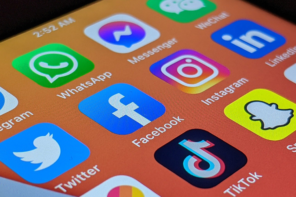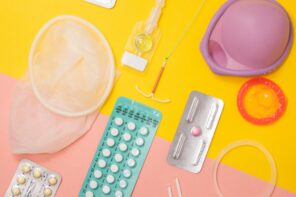Social media offers new possibilities for the public to encroach on the personal. A photo of oneself, previously a relic of intimacy, can now be posted publicly online; available, potentially, to the entire Internet-accessing population. This new form of removed intimacy has opened doors for a novel form of public relations — a relationship between fans and celebrities that reads more like a friendship than anything else. Celebrities can interact with their followers, share a picture of their dog, of their dinner, or of their homes in the exact same way a regular person can with their friends. They boost their public relations by being “just like us”; does that mean we can be just like them?
In the age of the Influencer, the divide between celebrities and common members of society has blurred significantly. Beginning with viral videos that might catapult you into one or two interviews on The Ellen Show, being social media famous has now become a career possibility. Your neighbour can become a millionaire by dancing on TikTok, your cousin can rake in brand deals by posting workout tutorial videos: the gap between the average person and celebrity status has been bridged significantly by social media.
They boost their public relations by being “just like us”; does that mean we can be just like them?
Paired with the dissolution of the public/private and of the celebrity/the common is a ballooning discourse around plastic surgery. Plastic surgery is no new phenomenon, within Hollywood especially. A life of fame is a visible one: to be gorgeous is almost necessary, and when you have the money to do so, why not visit Dr. Miami? (Of course, the classification of ‘gorgeous’ is not defined by a scientific methodology, and instead is a constructed subjectivity that reflects a very specific, socially-decided look that is by no means uniform or unrelated to social issues such as race, gender, and class). Previous generations of celebrities would deny plastic surgery with zeal, yet, within the past couple of years, many are beginning to open up. Tyra Banks refused to comment on allegations that she got a nose job early on in her career before finally doing so in 2018. The story of Kylie Jenner is emblematic of this change; when her lips famously doubled in size back in 2014, she initially blamed makeup, despite the obvious difference, adhering to contemporary commonly-held notions of privacy. Within a year, Jenner eventually admitted to having lip filler and has since gone so far as to publicly recommend the clinic she goes to. In line with their new social positioning of “Friend,” it seems that celebrities and social media micro-celebrities alike now adopt a stance of informing the public of their cosmetic enhancements for the sake of being realistic. What does feel new is the trend of plastic surgery permeating the common sphere, trickling down from celebrity, to micro-celebrity, to me. Videos documenting influencers getting various surgeries are not uncommon. I can watch a video of someone, seemingly just like me, pointing to an insecurity she has, just like mine, and get it “fixed.”
“…it seems that celebrities and social media micro-celebrities alike now adopt a stance of informing the public of their cosmetic enhancements for the sake of being realistic”
Those who argue for transparency regarding plastic surgery cite the possible relief that occurs when a “gorgeous” celebrity points to cosmetic enhancements as the reason for their good looks, as if knowing Kylie Jenner’s plump lips are not natural eases my own insecurity (It’s okay my lips aren’t plump like Kylie Jenner, she looked just like me before she paid thousands of dollars not to!). In theory, this may lead to an acceptance of appearance, a resignation in understanding that the “gorgeous” look is naturally unattainable and therefore I should not compare myself to those who pay for it. This might work, if only cosmetic enhancement were just that: unattainable, limited to the realm of the rich and famous. Except it isn’t. I can point to multiple clinics within a half an hour drive from my house, and I technically have enough money saved up to get at least one round of filler. What really happens is that this transparency ultimately becomes a catalyst for further insecurity. When my own appearance and cosmetic surgeries are compartmentalized in my mind as separate entities, when I am not confronted with the possibility of a new face, I am content. If the donkey did not think reaching the carrot was possible, it would not fixate on eating it. This transparency, however, shrinks the distance to the carrot, just enough to urge one forward. I look in the mirror and I can feasibly imagine a future where I look different, turning myself into a fragmentation of body parts that can be exchanged and replaced. Two images of myself run parallel to each other: the normal me, and the “better” me. I can switch over to the other side – all I have to do is pay. It is an alienating feeling, being split in two.
As a result of this policy of honesty, plastic surgery’s infiltration into cultural discourse has proliferated to new heights. The material prevalence of plastic surgery is correlatively sky-rocketing, with numbers of procedures in the United States having risen around 20 percent since 2019. Instances of certain procedures, such as cheek implants and butt lifts, have almost doubled in that time. In 2022, an estimated 25 million people underwent either surgical or minimally invasive cosmetic procedures in the United States alone. Women, interestingly, account for 94 percent of this number.
“Entire careers of contemporary style or makeup influencers are founded upon their ability to sell products to their predominantly women audiences by capitalizing on what people think they lack.”
I completely understand the urge to undergo plastic surgery. I hold no judgement for anyone who does it. It makes sense. I am not too far removed from the incredibly human feeling of insecurity to refuse considering it myself. But it is the fact that plastic surgery makes so much sense that frustrates me — its normalization only speaks to wider issues. Society has a history of capitalizing on women’s insecurities; women being the primary seekers of plastic surgery is no coincidence. Insecurities are extremely profitable when commodities can be advertised as “solutions” to them. Entire careers of contemporary style or makeup influencers are founded upon their ability to sell products to their predominantly women audiences by capitalizing on what people think they lack. The cosmetic surgery industry operates in tandem with this: they claim to be fixing women’s insecurities, in reality perpetuating them to a greater extent for an increased profit. To grow up a girl is to be confronted with answers to problems you never had; I had no idea legs could be too hairy until commercials for razors, eyelashes too short before mascara, lips too thin until filler, butts too small until BBLs. Most of my conscious memory has been contaminated with insecurities imposed upon me, from my hips to my collarbones to even the shape of my wrists. I can only wonder what beautiful things could have grown from that brain space if it were not already occupied.








